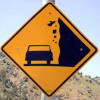-
bmsok
-
Everythingispenguins
-
mememuseum
-
 GoofSchmoofer
GoofSchmoofer -
Black_Char
-
Particularist11
-
 ICastFist
ICastFist -
KnightontheSun
-
 Zoomboingding
Zoomboingding -
 haulyard
haulyard -
shalafi
-
wanderingmagus
-
Sindralyn
-
MrRawRats
-
LaFinlandia
-
 lespea
lespea -
drcarrot
-
sinceasdf
-
 Kata1yst
Kata1yst -
JohnDClay
-
tyrmund
-
OlinOfTheHillPeople